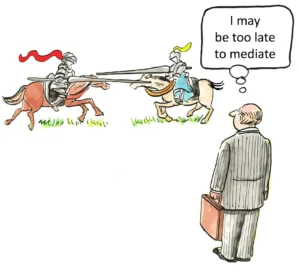How Do Laws Adapt to New Forms of Digital Communication?
The adaptation of laws to new forms of digital communication represents one of the most significant challenges facing our legal system today. As technology rapidly evolves, creating novel methods for individuals and organizations to interact, share information, and conduct business, the law must continually transform to address emerging issues while preserving fundamental legal principles. This tension between technological innovation and legal adaptation creates a complex landscape where legislators, courts, and regulatory agencies struggle to develop frameworks that protect individual rights, promote responsible business practices, and maintain social order in an increasingly digital world.
The digital revolution has fundamentally altered how we communicate, shifting interactions from physical spaces governed by well-established legal doctrines to virtual environments where traditional legal concepts may not readily apply. The Supreme Court recognized this transformation in Reno v. ACLU, affirming that “Internet communications warrant the same level of constitutional protection as books, magazines, newspapers, and speakers on a street corner soapbox.” This landmark ruling established that core constitutional principles extend to digital spaces, yet the unique characteristics of online communication continue to challenge conventional legal frameworks in ways that demand thoughtful adaptation rather than rigid application of pre-digital precedents.
Recent developments in artificial intelligence, virtual reality, and blockchain technologies have further accelerated the need for legal evolution. As these innovations create entirely new forms of digital interaction—from AI-generated content to virtual property ownership in the metaverse—they raise novel questions about liability, intellectual property, privacy, and jurisdictional authority. The legal system’s response to these challenges will significantly impact how digital technologies develop and how society benefits from their potential while mitigating associated risks.
Constitutional Protections in the Digital Age
The First Amendment’s application to digital speech has emerged as a critical battleground in the adaptation of constitutional principles to new communication technologies. Courts have consistently recognized that online expression deserves robust protection, with Justice John Paul Stevens declaring in Reno v. ACLU that the internet “constitutes a vast platform from which to address and hear from a world-wide audience of millions of readers, viewers, researchers, and buyers,” and that “any person with a phone line can become a town crier with a voice that resonates farther than it could from any soapbox.” This powerful affirmation established that digital communication receives full First Amendment protection.
However, the unique characteristics of online speech—its permanence, searchability, and potential for instantaneous global dissemination—have complicated the application of traditional First Amendment doctrines. Courts have grappled with how to balance free expression against competing interests such as privacy, reputation, and public safety when communication occurs at unprecedented scale and speed. The Supreme Court’s recognition that the internet represents a uniquely accessible medium for expression has generally led to skepticism toward regulations that might chill online speech, yet questions remain about how to address genuinely harmful content without undermining constitutional protections.
The tension between government regulation and free expression has been particularly evident in recent challenges to state laws attempting to regulate social media platforms. More than 400 bills have been introduced in state legislatures since 2021 seeking government regulation of social media, many raising significant First Amendment concerns. High-profile laws in Florida and Texas prohibiting platforms from moderating content based on viewpoint have faced constitutional challenges, highlighting the complex interplay between platform rights, user expression, and government authority in the digital sphere. These cases demonstrate the ongoing struggle to determine when digital communication platforms should be treated as neutral conduits for speech and when they function more like publishers with their own expressive interests.
Section 230 and Platform Liability
Perhaps no single legal provision has shaped the development of digital communication more profoundly than Section 230 of the Communications Decency Act. This landmark legislation, which shields online platforms from liability for content posted by their users, has been described as “the twenty-six words that created the internet.” By establishing that platforms are not legally responsible for user-generated content, Section 230 enabled the growth of interactive online services without the chilling effect of potential litigation for every user post.
The immunity provided by Section 230 represents a deliberate policy choice to foster innovation and free expression online. As the Freedom Forum notes, “Social media platforms enjoy significant protection from liability, thanks to a federal law known as Section 230 of the Communications Decency Act.” This protection means that “Facebook is not liable for defamation based on its users’ posts. YouTube cannot be sued for invasion of privacy based on videos uploaded by its users. TikTok cannot be sued for negligence if someone is injured when copying a risky act they saw someone post there.” This broad immunity has allowed platforms to operate at scale without reviewing every piece of user content before publication.
However, Section 230’s powerful protections have faced increasing scrutiny as digital platforms have grown in size and influence. According to the Congressional Research Service, more than a dozen proposals have been introduced in Congress since 2018 to limit Section 230, though none have passed. Critics argue that the law goes too far in shielding platforms from responsibility for harmful content, while defenders maintain that weakening these protections would fundamentally alter the open nature of online communication. This debate reflects broader questions about how to balance innovation and accountability in the digital age—questions that will likely shape the future of internet regulation for years to come.
Emerging Challenges from Generative AI
The rapid development of generative artificial intelligence has created unprecedented legal challenges that existing frameworks struggle to address. These powerful systems, capable of producing text, images, audio, and video that mimic human creation, raise fundamental questions about copyright, liability, and the very nature of authorship. As one legal analysis notes, “The emergence of consumer-friendly generative AI tools has alarmed content creators, lawmakers, and regulators wrestling with advertising transparency, intellectual property, data privacy, discrimination, ethics, and other issues.”
Copyright law faces particular strain from AI systems trained on vast datasets of existing creative works. Recent litigation highlights these tensions, with the New York Times filing a lawsuit accusing OpenAI and Microsoft of “widespread copyright infringement and competition concerns.” The lawsuit asserts that both companies used millions of published news articles to train their large language models without authorization. Similar cases have been brought by authors, artists, and other content creators, challenging the AI developers’ claims that their use of copyrighted materials for training purposes constitutes “fair use” under copyright law.
The question of AI authorship presents another significant legal challenge. The U.S. Copyright Office has maintained that works must have “human authorship” to qualify for copyright protection, rejecting registrations for AI-generated content. This position reflects traditional understandings of creativity as an inherently human activity, but it creates uncertainty about the legal status of the growing volume of content produced through human-AI collaboration. As these systems become more sophisticated and integrated into creative workflows, courts and policymakers will need to develop nuanced approaches that recognize the reality of AI-assisted creation while preserving incentives for human creativity.
Privacy and Data Protection in Digital Communications
The proliferation of digital communication has fundamentally transformed privacy law, as traditional concepts of personal space and reasonable expectations of privacy struggle to accommodate the realities of constant data collection and algorithmic analysis. Digital interactions generate vast amounts of personal information—from explicit content sharing to metadata about when, where, and how we communicate—creating unprecedented challenges for privacy protection in both legal and technical domains.
Data protection regulations have gained new momentum with the digitization of information consumption. As the Journal of Journalism Research notes, “As tech platforms collect and process vast amounts of user data, legal provisions are needed to safeguard user privacy, prevent data breaches, and ensure that personal information is handled responsibly, holding tech platforms accountable for their data processing practices.” This recognition has led to comprehensive privacy frameworks like the European Union’s General Data Protection Regulation (GDPR) and the California Consumer Privacy Act (CCPA), which establish new rights for individuals and obligations for data controllers.
These regulatory approaches reflect a shift toward viewing privacy as a matter of individual control over personal information rather than merely protection from intrusion. Modern privacy frameworks typically include rights to access, correct, delete, and port personal data, as well as requirements for transparent data practices and limitations on data collection and use. However, implementing these principles in the context of complex digital ecosystems presents significant challenges. The global nature of digital communication means that data often crosses jurisdictional boundaries, creating conflicts between different regulatory regimes and raising questions about which laws apply to particular data processing activities.
Cross-Border Jurisdiction and Digital Sovereignty
The borderless nature of digital communication creates profound jurisdictional challenges for legal systems traditionally bounded by territorial sovereignty. When online interactions connect individuals and entities across national boundaries, questions inevitably arise about which nation’s laws apply and how they can be effectively enforced. As Konstantakis Law observes, “The internet, as a global network connecting billions of people, has necessitated international collaboration in shaping its legal framework. While the internet transcends geographical boundaries, laws are largely based on national jurisdictions. This has led to a complex web of regulations, as governments attempt to enforce their laws in a borderless digital realm.”
This jurisdictional complexity has led to increasing assertions of data sovereignty, with nations implementing regulations that restrict cross-border data flows and require local storage of certain information. China’s regulatory approach exemplifies this trend, with its Data Security Law establishing comprehensive data governance with extraterritorial reach. These measures reflect growing recognition that control over data represents an important aspect of national sovereignty in the digital age, yet they create significant compliance challenges for global platforms and potentially fragment the once-open internet into distinct regulatory zones.
The metaverse presents even more complex jurisdictional questions, as entirely virtual spaces may lack clear connections to physical territories. As Record of Law notes, “The metaverse functions internationally, jurisdictional issues arise. Determining which nation’s laws apply in a dispute can be a legal minefield.” Key concerns include conflict of laws (which legal system handles disagreements between people from different nations) and enforcement challenges (whether judgments from one jurisdiction can be executed in another when assets exist only in the virtual world). These issues highlight the need for new approaches to jurisdiction that can accommodate the reality of digital interaction without abandoning fundamental principles of legal authority and accountability.
Criminal Law and Digital Evidence
The adaptation of criminal law to digital communication has created significant challenges for law enforcement, courts, and individual rights protections. As criminal activity increasingly involves digital elements—from cybercrime committed entirely online to traditional offenses facilitated through digital means—the legal system has had to develop new approaches to investigation, evidence collection, and prosecution that balance public safety with constitutional protections.
Digital evidence has become central to many criminal cases, raising complex questions about search and seizure in the digital context. The Ninth Circuit’s decision in United States v. Wilson illustrates these challenges, holding that the government’s warrantless search of email attachments flagged by Google’s automated system was not justified under the private search doctrine. The court reasoned that because no Google employee had actually viewed the images (the flagging was done through automated hash matching), the government exceeded the scope of the private search by viewing the attachments without a warrant. This decision highlights the difficulty of applying traditional Fourth Amendment concepts to digital evidence, where automated processes and human review may interact in novel ways.
Social media evidence presents particular challenges for criminal prosecution, as demonstrated in cases like People v. Hoskins. In this case, prosecutors used posts from the defendant’s Facebook account to argue that he had specific intent to participate in a criminal conspiracy. However, as CEB notes, “the case highlights the challenges of relying on social media evidence, as the content can often be ambiguous and open to multiple interpretations.” Courts must develop standards for authenticating digital evidence, determining its relevance and probative value, and addressing potential prejudicial effects, all while ensuring that fundamental rights to privacy, due process, and confrontation are preserved in the digital context.
Regulation of Online Platforms and Content Moderation
The legal framework governing online platforms continues to evolve as these entities have grown from simple communication tools to powerful institutions that shape public discourse. Platform regulation represents one of the most contested areas of digital communication law, with ongoing debates about the appropriate balance between platform autonomy, user rights, and public interest considerations like preventing harm and promoting competition.
Content moderation practices have become a particular focus of regulatory attention, with divergent approaches emerging across different jurisdictions. Some states have enacted laws specifically addressing content moderation, such as California’s law requiring social media platforms to disclose their policies about moderating hate speech and disinformation. Meanwhile, states like Florida and Texas have taken the opposite approach, prohibiting platforms from moderating content based on viewpoint. These conflicting regulatory models reflect deeper disagreements about the nature of digital platforms—whether they should be treated primarily as neutral infrastructure or as entities with their own expressive interests and responsibilities.
The tension between government regulation and platform autonomy raises significant First Amendment questions. As the Freedom Forum notes, “Because social media platforms are engaged in speech, any law or attempt to regulate them must not violate the First Amendment. Platforms’ content moderation efforts do not violate the First Amendment because they are private companies.” However, government attempts to control how platforms moderate content may themselves raise constitutional concerns. This complex interplay between public and private governance of digital speech will likely remain a central challenge as laws continue to adapt to evolving forms of online communication.
Intellectual Property in the Digital Environment
The digital transformation has fundamentally disrupted traditional intellectual property frameworks, creating both opportunities and challenges for copyright, trademark, and patent systems. As content becomes increasingly easy to create, copy, and distribute through digital channels, intellectual property law has struggled to maintain an appropriate balance between protecting creators’ rights and enabling the free flow of information that drives innovation and cultural development.
Copyright law has faced particular strain from digital technologies that enable perfect, costless reproduction and distribution of creative works. Issues like online piracy, copyright infringement on social media platforms, and the rise of user-generated content have pushed lawmakers to revise and adapt copyright frameworks. Recent litigation over AI training datasets highlights these ongoing tensions, with content creators arguing that unauthorized use of their works to train generative models constitutes copyright infringement, while AI developers claim protection under fair use doctrines. These cases will likely establish important precedents about how copyright law applies to new forms of digital creation and consumption.
Trademark law has similarly evolved to address digital challenges, including domain name disputes, keyword advertising, and virtual marketplace infringement. The borderless nature of digital commerce creates jurisdictional complications for trademark enforcement, while the rise of virtual goods and services in metaverse environments raises novel questions about how trademark protection applies to entirely digital products. As these technologies continue to develop, intellectual property law will need to adapt further to provide appropriate protection for creators and businesses while enabling the innovation that drives digital progress.
Accessibility and Digital Inclusion
Legal frameworks governing digital communication increasingly recognize the importance of ensuring that these technologies remain accessible to all individuals, including those with disabilities. The Twenty-First Century Communications and Video Accessibility Act (CVAA) represents a significant step in this direction, updating telecommunications protections to address emerging technologies. As the FCC notes, “The new law contains groundbreaking protections to enable people with disabilities to access broadband, digital and mobile innovations—the emerging 21st century technologies for which the act is named.”
The CVAA reflects recognition that digital divides can exclude significant portions of the population from fully participating in modern communication systems. According to FCC data, while 65 percent of Americans have broadband at home, only 42 percent of Americans with disabilities have these services. This gap stems partly from physical barriers that people with disabilities confront in using the Internet, highlighting the need for legal frameworks that promote universal design and reasonable accommodations in digital environments.
The law’s provisions address both communications access (Title I) and video programming (Title II). For example, smartphones must be usable by blind and visually impaired people as well as people with hearing aids, while programs shown on television with captioning must include that captioning when they are re-shown on the Internet. These requirements demonstrate how legal adaptation can ensure that technological progress benefits all members of society rather than creating new forms of exclusion based on disability status.
Algorithmic Decision-Making and AI Governance
The increasing use of algorithms and artificial intelligence in digital communication platforms raises novel legal questions about transparency, accountability, and fairness. As these systems make consequential decisions—from content moderation to user profiling and recommendation—traditional legal frameworks struggle to address their unique characteristics and potential impacts. A systematic analysis of AI-related court cases reveals that judicial decisions in this area “are almost exclusively based on procedural grounds, and specifically, they center on concerns about due process infringements.”
This analysis identified six common procedural violations that courts have recognized when governmental entities rely on AI, creating a checklist of minimal requirements that any governmental body should satisfy to shield their use of algorithmic systems from judicial review. These requirements focus on ensuring that automated decision-making systems remain subject to meaningful human oversight and accountability mechanisms, reflecting concerns that algorithmic opacity could undermine fundamental due process principles like notice, explanation, and opportunity to contest adverse decisions.
Private sector use of algorithms presents different but related challenges, particularly regarding potential discrimination and consumer protection concerns. The Federal Trade Commission has shown increasing interest in algorithmic transparency and accountability, taking action against companies making deceptive claims about their AI capabilities. In September 2024, the FTC announced “Operation AI Comply,” a law enforcement sweep targeting companies that used AI to enable deceptive practices or made false claims about their AI technologies. These actions demonstrate how existing consumer protection frameworks can adapt to address novel harms arising from algorithmic systems, even as more specialized regulatory approaches continue to develop.
Digital Identity and Authentication
The evolution of digital identity systems presents significant legal challenges as traditional concepts of identification and authentication adapt to online environments. In physical interactions, established methods like government-issued identification cards and in-person verification provide reasonably reliable means of confirming identity. However, digital contexts require different approaches that balance security, convenience, and privacy while maintaining sufficient reliability for legal purposes.
Contract formation in digital environments highlights these challenges. As Record of Law notes regarding metaverse transactions, a key concern involves “identity verification: How do parties make sure the contracting avatar is a legitimate and authorized entity?” Without reliable identity verification, digital contracts may face challenges regarding enforceability, as traditional requirements like clear offer, acceptance, and consideration may be difficult to establish when parties interact through digital proxies rather than directly.
Legal frameworks have begun adapting to these challenges through provisions like the Electronic Communications Act 2000 (UK) and the ESIGN Act 2000 (US), which establish the validity of digital signatures and contracts. However, these laws may not fully address the complexities of newer technologies like smart contracts, “whose execution is automatic and irreversible.” As digital identity systems continue to evolve—potentially incorporating biometric verification, blockchain-based credentials, or other novel approaches—legal frameworks will need further adaptation to ensure that digital identities can function effectively for legal purposes while protecting privacy and preventing fraud or identity theft.
The Future of Digital Communication Law
The legal adaptation to digital communication will likely accelerate as emerging technologies create new challenges and opportunities. Virtual and augmented reality, brain-computer interfaces, and increasingly sophisticated AI systems will push existing legal frameworks in unexpected directions, requiring thoughtful evolution rather than rigid application of pre-digital concepts. As these technologies blur the boundaries between physical and digital realms, legal distinctions based on these categories may become increasingly difficult to maintain.
International coordination will become increasingly important as digital communication continues to transcend national boundaries. As the Journal of Journalism Research notes, “In the EU context, we could witness a fundamental turn of the policy from a liberal economic perspective to a constitution-oriented approach, with a leading role of the Court of Justice of the European Union, aimed at opposing platform powers.” This “digital constitutionalism” approach aims to “protect fundamental rights and democratic values while balancing the need for technological advancement.” Whether similar approaches will develop in other jurisdictions remains an open question, but the need for some form of international coordination seems clear given the global nature of digital communication.
The adaptation of law to new forms of digital communication ultimately requires balancing competing values—innovation and regulation, freedom and responsibility, individual rights and collective welfare. As Krisztina Rozgonyi observes, “Protecting fundamental freedoms online should be balanced with other legitimate public policy objectives, with utmost care at setting the boundaries of state intervention.” Finding this balance will remain the central challenge for legislators, courts, and regulators as they continue developing legal frameworks that can accommodate technological change while preserving essential legal principles and societal values.
Conclusion
The adaptation of laws to new forms of digital communication represents an ongoing process rather than a destination—a continuous evolution that must respond to technological innovation while maintaining core legal principles. This process involves all branches of government, with legislatures creating new statutory frameworks, courts interpreting existing laws in novel contexts, and regulatory agencies developing specialized expertise to address emerging challenges. The resulting legal landscape reflects both deliberate policy choices and organic development through case-by-case adjudication.
The most successful legal adaptations recognize both the continuity and discontinuity between traditional and digital communication. Many fundamental legal principles—free expression, privacy, property rights, contractual freedom—remain relevant in digital contexts, but their application may require significant recalibration to address the unique characteristics of online interaction. The Supreme Court’s recognition that “Internet communications warrant the same level of constitutional protection as books, magazines, newspapers, and speakers on a street corner soapbox” exemplifies this approach, affirming constitutional continuity while acknowledging the distinctive nature of the medium.
As digital communication continues evolving through technologies like artificial intelligence, virtual reality, and whatever innovations lie beyond, the legal system will face ongoing pressure to adapt. This adaptation should aim for what Rozgonyi describes as “modernized laws [that] ensure that individuals have access to diverse and high-quality content while respecting their rights.” Achieving this balance will require thoughtful engagement with both technological realities and enduring legal values—a challenging but essential task for maintaining a legal system that effectively governs an increasingly digital society.
Citations:
- Laws Adapting to Technology
- Internet Communication Rules
- Court Cases on Filtering
- Social Media Regulation
- Generative AI Legal Issues
- Advertising Law Trends 2024
- Digital Legal Communication
- Section 230 and AI
- Metaverse Legal Challenges
- Social Media Legal Implications
- Modernizing Media Laws
- FCC Accessibility Regulations
- Media Law Developments
- Social Media Evidence Cases
- AI Use in US Courts
- Media Laws for Digital Change
- Digital Law Evolution
- Technology in Legal Practices
- UN on Digital Rights
- Free Speech Online Ruling
- Senate Bill on Privacy
- Key AI Legal Challenges
- Fourth Amendment Digital Age
- Myanmar Cybersecurity Law
- Court Cases on Digital Communication
- Social Media Advertising Rules
- AI Evidence in Court
- Modernizing Copyright Law
- SEO Keywords for Lawyers
- Law Firm Keyword Research
- Attorney SEO Keyword Guide
- Internal Links for Law Firms
- Law Firm SEO Keyword Tips
- Digital Marketing for Lawyers
- Competitive Legal Keywords
- Law Firm SEO Internal Linking
- SEO and Legal Compliance
- Digital Age Legal Ethics
- Popular Law Keywords
- Internal Linking for Lawyers
- Digital Media Case Study
- Law Firm Digital Transformation
- Metaverse Legal Implications
- Digital Law Scholarly Article
- History of Social Media Law
- Precedent Legal Resources
- Metaverse IP Legal Issues
- Social Media Legal Issues
- AI in Legal Practices
- Metaverse Legal Conference Report
- Top SEO Keywords for Law Firms
- Legal Keywords Analysis
- SEO Keyword Research for Attorneys
- Choosing Keywords for Lawyers
- SEO Internal Linking Strategies
- SEO Guide for Lawyers
- Digital Communication Study
- Social Media in Workplace Law














![Life Insurance – The Ultimate Estate Planning Tool [Video] - Attorneys.Media - Legal Expert Interviews & Trusted Advice Watch: Life Insurance – the Ultimate Estate Planning Tool with Andrew Dósa – Tacoma & Oakland](https://b3514829.smushcdn.com/3514829/wp-content/uploads/2025/09/life-insurance-form-SBI-300194206-300x200.jpg?lossy=2&strip=1&webp=1)





